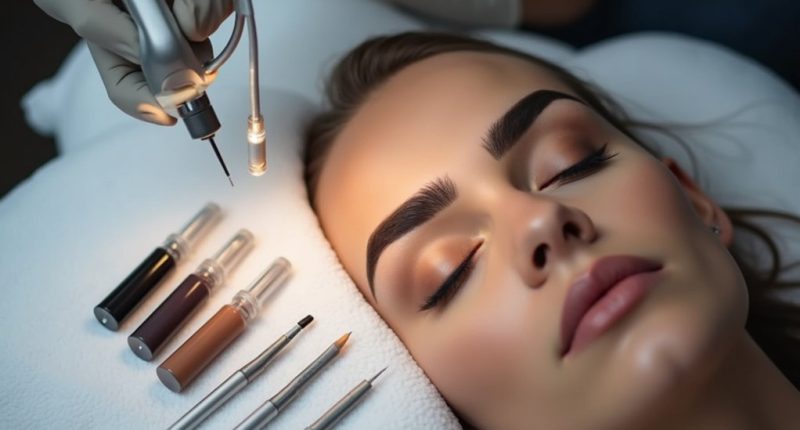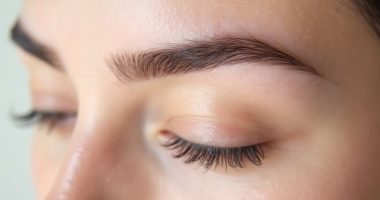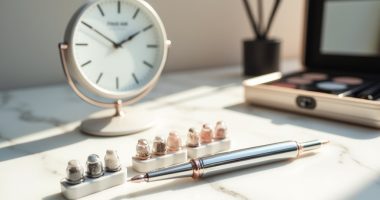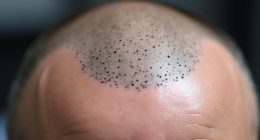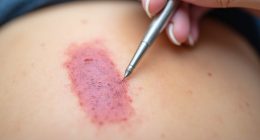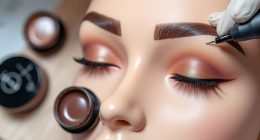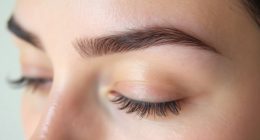Permanent makeup gone wrong sticks around. Literally. Correcting those raccoon eyes or mismatched brows requires experts who understand color theory—not the bargain artist who botched it initially. Neutralizing blue tints might need orange pigments. Shape problems demand artistic refinement. Multiple sessions? Almost guaranteed. The process isn't pleasant, and results aren't instant. Proper certification matters when someone's fixing your face. Prepare for a journey that's both technical and emotional.
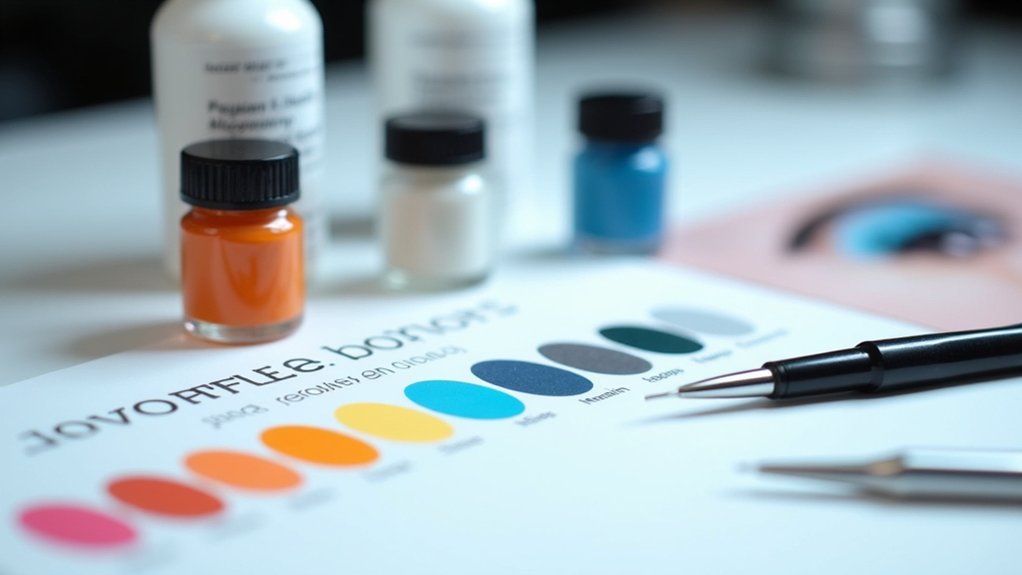
When permanent makeup goes wrong, it goes really wrong. A botched eyebrow, misshapen lip line, or raccoon-like eyeliner doesn't just disappear with makeup remover. It sticks around, sometimes for years. And it's right there on your face for everyone to see. Not exactly the confidence boost people were hoping for when they signed up for the procedure.
Permanent makeup disasters aren't just disappointments—they're long-term facial fixtures that follow you everywhere.
Fixing these mistakes requires serious expertise in color theory. It's not as simple as covering one color with another. The wrong approach can make things worse—much worse. Professionals use complementary colors to neutralize unwanted tones; blue-tinted brows might need orange-based pigments to correct them. Sometimes layering new pigments adjusts the hue just enough to look natural again. But don't expect overnight miracles. These corrections take time.
Removal methods vary in effectiveness. Saline solutions gradually fade pigments. Lasers break down ink particles. Glycolic acid peels work for surface-level issues. And in truly desperate situations? Surgical excision. Yes, cutting it out. That's how bad it can get. Most clients need multiple sessions regardless of the method. One and done? Not a chance. Saline removal specifically works through osmotic pressure to draw unwanted pigment out of the skin using natural ingredients that typically cause less scarring than other methods.
Shape problems present their own challenges. Eyebrows that don't match, eyeliner that's too thick on one side, or lips that look perpetually surprised require careful adjustment. Artists refine arches for better facial harmony, modify thickness, and soften harsh edges. These changes must respect facial structure. You can't just wing it. Literally. Achieving aesthetically pleasing results often requires specialists who understand the artistic balance of features and can correct issues caused by poorly trained technicians.
Finding the right professional for corrections is essential. They need thorough understanding of skin anatomy, advanced color knowledge, and proper certification. Patients should be prepared that achieving desired results may require multiple sessions and disciplined aftercare. The bargain artist who botched your face in the first place? Probably not your best bet for fixing it.
Clients should maintain realistic expectations. Perfect results aren't always possible. The process might be uncomfortable. Proper aftercare matters enormously for healing. And yes, you'll likely need touch-ups later.
The permanent makeup world has legal and ethical aspects, too. Informed consent isn't just paperwork—it's protection. Artists must document everything and follow local regulations. Correcting another artist's work brings its own ethical questions. Privacy matters.
Bottom line: permanent makeup corrections are complex. But with the right approach, even the worst disasters can usually be improved. Not perfect. Improved. Sometimes that's enough.
Frequently Asked Questions
How Much Does Permanent Makeup Correction Typically Cost?
Permanent makeup correction isn't cheap.
Cost factors include the artist's experience, location, and complexity of the fix.
Pricing variations are significant – eyebrow corrections run $300-$800, lip tattoos $400-$1,200, and eyeliner fixes $250-$1,000.
Color correction sessions? $350-$500+.
Initial removal sessions exceed $1,000.
Multiple sessions are often necessary.
Big city? Prepare to pay more.
Experienced artist? Even more.
Sometimes the correction costs more than the original work.
That's just how it goes.
Can All Permanent Makeup Mistakes Be Fully Corrected?
The hard truth? No. Not all permanent makeup disasters can be completely erased.
Success depends on proper technique evaluation by experienced artists. Some pigments just won't budge completely.
Color correction works wonders for many mishaps, but certain colors—especially reds and oranges—fight back stubbornly.
Deep pigments? Extra challenging. Skin damage? Even tougher.
Multiple sessions are usually needed. Perfect results? Rare. Improvement? Absolutely possible.
Just don't expect miracles where physics and biology say otherwise.
Is Correction More Painful Than the Original Procedure?
Correction more painful than the original? Not usually.
Pain sensitivity varies person to person—some clients actually doze off during fixes!
Modern correction techniques typically use the same numbing agents as initial procedures.
Think threading-level discomfort, not torture.
Caffeine makes things worse, by the way. Skip that pre-appointment latte.
Anxiety? That'll amplify everything.
Most technicians adjust pain management based on individual needs.
Bottom line: your mental state matters as much as the procedure itself.
How Many Sessions Are Needed for Complete Correction?
Complete correction typically requires 2-3 sessions, period.
Some complex cases? They might need up to 6 months of commitment. No quick fixes here.
Session duration varies based on correction techniques applied—color neutralization takes time, shape corrections even longer.
Previous tattoo depth, skin type, and pigment quality all factor in.
Clients healing differently is just nature's way of keeping technicians on their toes.
The process demands patience. Results won't magically appear overnight, despite what Instagram might suggest.
Are There Permanent Makeup Mistakes That Cannot Be Fixed?
Yes. Some permanent makeup mistakes are beyond repair. Period.
Severe pigment discoloration, extensive scarring, and deep migration can resist even advanced correction techniques. No magic fix here.
When tissue damage is extensive or structural alterations have occurred, permanent makeup options become severely limited.
Eyebrows permanently altered by scarring? Lips distorted beyond recognition? Eyelids structurally changed? These aren't just "oops" moments—they're permanent problems.
Modern methods help, but they're not miracle workers.
